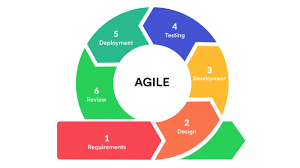Unlock Your Potential with Software Development Courses: Master New Skills Today!
The Importance of Software Development Courses
Software development is a rapidly growing field with a high demand for skilled professionals. Whether you are looking to start a career in software development or enhance your existing skills, taking software development courses can be highly beneficial.
Benefits of Software Development Courses
**Skill Enhancement**: Software development courses provide you with the opportunity to enhance your programming skills and stay updated with the latest technologies and trends in the industry.
**Career Advancement**: By acquiring new skills and knowledge through software development courses, you can improve your career prospects and unlock new opportunities for growth and advancement.
**Hands-On Experience**: Many software development courses offer hands-on projects and real-world applications, allowing you to gain practical experience and build a strong portfolio of work.
Popular Topics Covered in Software Development Courses
**Programming Languages**: Courses cover popular programming languages such as Java, Python, C++, and JavaScript, among others.
**Web Development**: Learn how to create dynamic websites and web applications using HTML, CSS, and various web development frameworks.
**Mobile App Development**: Explore mobile app development for iOS and Android platforms, including app design, user interface development, and testing.
Conclusion
Whether you are a beginner or an experienced developer, enrolling in software development courses can help you stay competitive in the ever-evolving tech industry. Invest in your education today and take your software development skills to the next level!
7 Benefits of Software Development Courses: Boost Your Skills, Career, and Portfolio
- Enhance programming skills
- Stay updated with industry trends
- Improve career prospects
- Gain hands-on experience
- Build a strong portfolio
- Learn popular programming languages
- Explore web and mobile app development
Challenges of Software Development Courses: High Costs, Time Investment, and Keeping Up with Rapid Technological Changes
Enhance programming skills
Enrolling in software development courses offers a valuable opportunity to enhance programming skills. These courses provide a structured learning environment where individuals can deepen their understanding of coding principles, algorithms, and best practices. By practicing coding exercises, working on real-world projects, and receiving feedback from experienced instructors, students can sharpen their programming abilities and become more proficient in writing efficient and robust code. Ultimately, enhancing programming skills through software development courses equips individuals with the expertise needed to tackle complex challenges and excel in the competitive field of software development.
Stay updated with industry trends
Staying updated with industry trends is a key advantage of enrolling in software development courses. These courses provide valuable insights into the latest technologies, tools, and best practices that are shaping the software development landscape. By staying current with industry trends, students can ensure that their skills remain relevant and in-demand, positioning themselves as competitive professionals in the ever-evolving field of software development.
Improve career prospects
Taking software development courses can significantly improve your career prospects by equipping you with valuable skills and knowledge that are in high demand in the tech industry. Employers are constantly seeking professionals with up-to-date expertise in programming languages, development tools, and best practices. By investing in software development courses, you demonstrate your commitment to continuous learning and skill enhancement, making yourself a more attractive candidate for job opportunities and career advancement.
Gain hands-on experience
One significant advantage of enrolling in software development courses is the opportunity to gain hands-on experience. These courses often include practical projects and real-world applications that allow students to apply their theoretical knowledge in a practical setting. By working on these hands-on projects, learners can develop essential skills, build a strong portfolio, and enhance their problem-solving abilities. This experiential learning approach not only deepens understanding but also prepares individuals for the challenges they may face in the field of software development.
Build a strong portfolio
Building a strong portfolio is a significant advantage of taking software development courses. Through hands-on projects and real-world applications offered in these courses, individuals can showcase their skills and expertise to potential employers or clients. A robust portfolio not only demonstrates proficiency in various programming languages and technologies but also highlights the ability to solve complex problems and deliver high-quality solutions. Having a diverse portfolio can set individuals apart in the competitive tech industry and open doors to exciting career opportunities.
Learn popular programming languages
One significant advantage of enrolling in software development courses is the opportunity to learn popular programming languages. These courses provide a structured environment where individuals can gain proficiency in languages such as Java, Python, C++, and JavaScript. By mastering these widely-used languages, students can enhance their coding skills, broaden their understanding of software development principles, and increase their employability in the competitive tech industry.
Explore web and mobile app development
Exploring web and mobile app development is a key advantage of software development courses. These courses provide valuable insights and hands-on experience in creating dynamic websites, user-friendly web applications, and innovative mobile apps for various platforms. By delving into web and mobile app development through these courses, individuals can acquire the skills needed to design responsive interfaces, implement functionality, and optimize user experiences, preparing them for exciting opportunities in the ever-expanding digital landscape.
Costly
Software development courses can be costly, particularly when provided by reputable institutions or focusing on advanced topics. The expense involved in enrolling in such courses can be a significant barrier for individuals looking to enhance their skills or pursue a career in software development. Despite the high cost, many learners find the investment worthwhile due to the quality of education and the potential career opportunities that advanced software development knowledge can unlock.
Time-Consuming
Completing a software development course can be time-consuming, posing a challenge for individuals with packed schedules. The significant time commitment needed to grasp complex programming concepts and complete hands-on projects may deter some from pursuing such courses. Balancing work, personal commitments, and dedicating ample time to learning new skills can be daunting. Time management becomes crucial when considering enrolling in software development courses to ensure successful completion while juggling other responsibilities.
Rapid Technological Changes
The rapid technological changes in the field of software development pose a significant challenge for course materials to remain up-to-date. As new technologies emerge and existing ones evolve, there is a risk that some software development courses may become outdated, potentially creating gaps in knowledge for learners. Staying current with the latest trends and advancements in the industry is crucial to ensure that students receive relevant and practical training that prepares them for the ever-changing landscape of software development.











